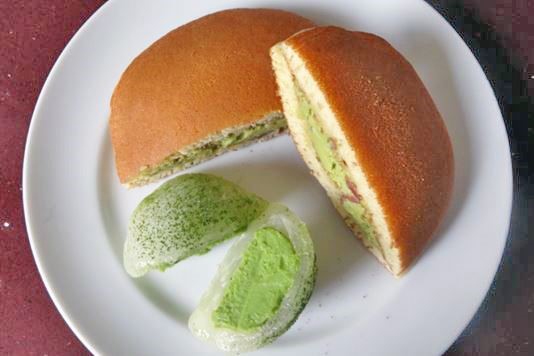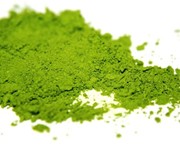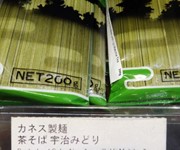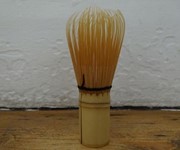Why I love cooking with... matcha

Here's why Ilya Fisher believes we should all be eating matcha, and some recipes to try.
 My first taste of matcha was nine years ago, in the form of two bright green scoops of ice cream.
My first taste of matcha was nine years ago, in the form of two bright green scoops of ice cream.
But what exactly is matcha? It's one of the most expensive teas on the market, and bright green in colour. Matcha is produced in Japan and is a high-end, labour-intensive product. Several weeks before picking, canopies are draped over the growing tea bushes to shade them. This causes the young leaves to grow thin and wide in order to capture as much available sunlight as possible. As a result, the chlorophyll-soaked leaves are bright green and develop an interesting amino acid called L-theonine (more about that later).
The newest, sweetest and most tender leaves are handpicked, steamed to prevent fermentation, and dried. Next they are graded by quality, which affects the price. The stems and veins are removed from these leaves before being ground into a very fine powder called matcha or maccha. The best matcha is ground on a high-quality stone mill. The demand in Japan for this product is very high, so only a small percentage is exported.
A super superfood

Many believe that matcha is even more beneficial than regular green tea, due to the way it's grown and the fact that the leaves are not steeped and thrown away but ground down and drunk whole. It's rich in antioxidants and apparently promotes weight loss by increasing your metabolic rate. In addition, matcha contains high levels of L-theonine, an amino acid known for its calm-inducing qualities. And it tastes delicious! Although that taste is difficult to describe... fresh, grassy, complex, vibrant.
Buying matcha

There doesn't appear to be a universal or formal grading system for matcha, so sellers often make their own categories such as ‘ceremonial’, ‘premium’ and ‘ingredient’ (lower grade used in cooking). The higher the grade, the smoother, sweeter and less astringent the taste. If you go to a Japanese store or look to buy matcha online it can be a bit bewildering. When baking with matcha or mixing it with other flavours in a drink, it makes sense to go for a lower grade. If you're planning to simply drink it with hot water, then you may wish to go for a higher priced matcha.
Always check the use by date on matcha, as it deteriorates over time. And store it in an airtight container in the fridge. Although expensive, you only need a tiny amount of matcha to brew a cup (about a quarter of a teaspoon), so a small tin goes a long way.
Using matcha
 If you have some matcha at home, try whisking it into a mug of rice dream – a rice milk widely available at supermarkets and health food stores. You could make a delicious matcha latte with cow’s milk, but rice milk is lighter and sweeter. It makes a beautiful combination. The tricky part is how to avoid clumps forming, which is why the Japanese use a bamboo whisk to perfectly disperse the powder evenly into a liquid. You can easily get hold of one online or at a Japanese store. A word of caution: bamboo whisks are delicate, so take care when storing it and rinse after each use.
If you have some matcha at home, try whisking it into a mug of rice dream – a rice milk widely available at supermarkets and health food stores. You could make a delicious matcha latte with cow’s milk, but rice milk is lighter and sweeter. It makes a beautiful combination. The tricky part is how to avoid clumps forming, which is why the Japanese use a bamboo whisk to perfectly disperse the powder evenly into a liquid. You can easily get hold of one online or at a Japanese store. A word of caution: bamboo whisks are delicate, so take care when storing it and rinse after each use.
I’ve been experimental to the extreme with matcha, making everything from matcha lattes to mochi rice balls, cream cakes, chocolates, sweets and even a silent Japanese tea ceremony that is based around drinking pure matcha whisked into hot water.
Cooking with matcha
Matcha can be used in many dessert recipes to add flavour and vibrant colour. Stir some matcha into good quality ice cream, or add a spoonful to a Madeira cake batter or shortbread before baking.
Here is my recipe for a cake with white chocolate, matcha and lots of toasted almond flakes sprinkled on top. Give it a go and tell us how you got on in the Comments box below.
Powdered matcha image courtesy of Matcha Tea
Have you tried cooking with these unusual ingredients?
Chicken feet
Quinces
Sausages and marmalade
Comments
Be the first to comment
Do you want to comment on this article? You need to be signed in for this feature